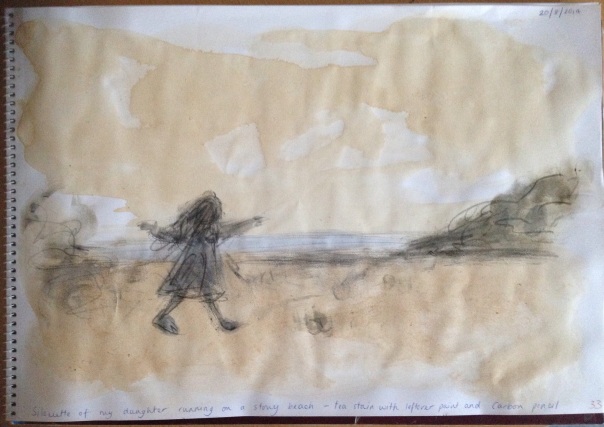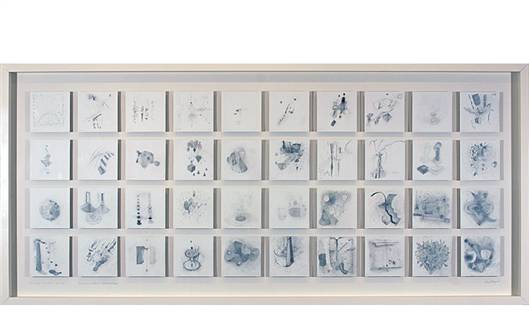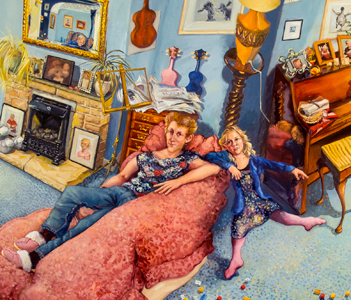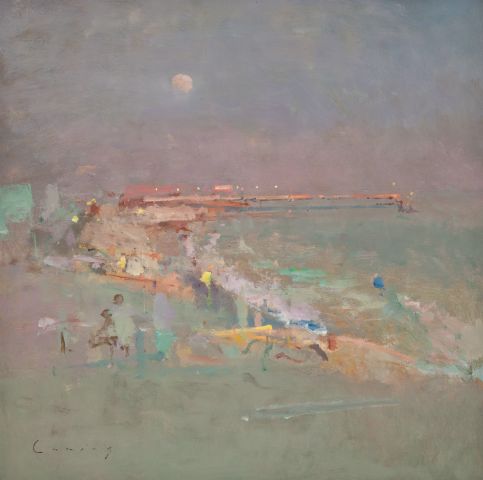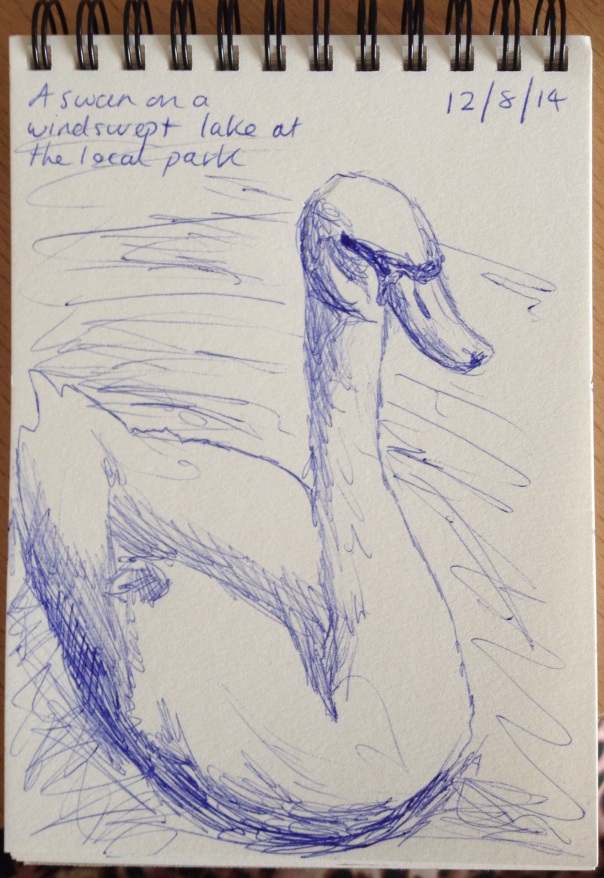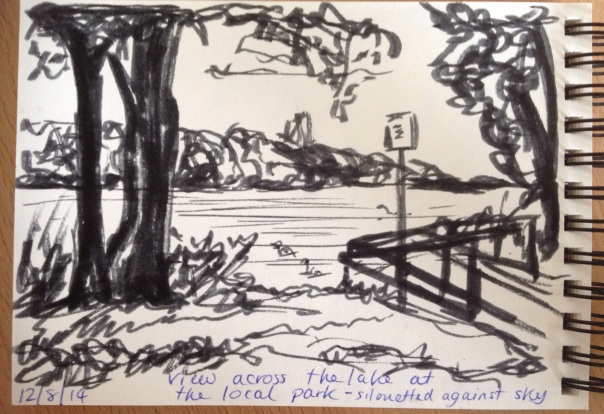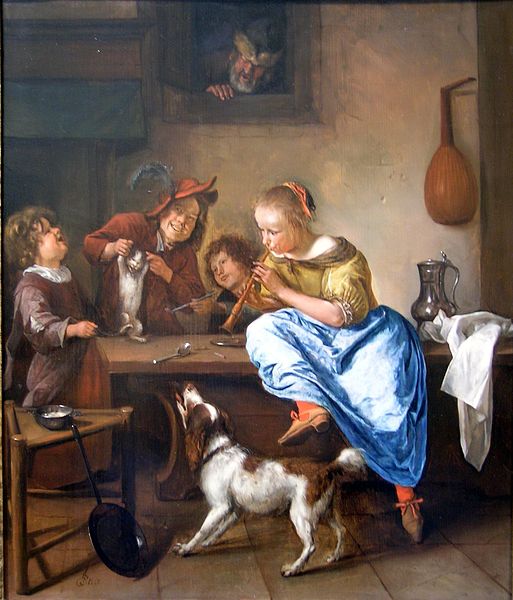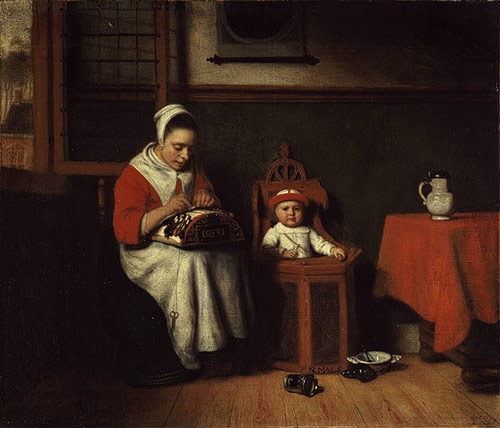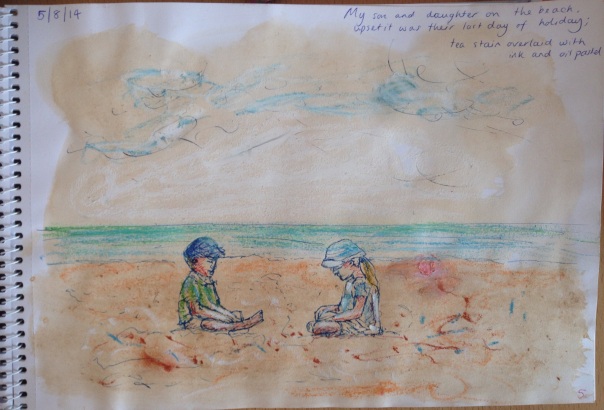I chose a view from the previous exercise, whereby I was standing against the back wall of my kitchen/diner, looking towards the door and out into the hallway. I used a 2B pencil to softly draw out the essential lines; at this stage it is a good way of seeing if your perspective skills have paid off, before going in with paint.
Once satisfied that everything was in the correct place, I began glazing in certain areas and building up colour using a restricted palette; in this case, mixtures of Yellow Ochre, Ultramarine, Paynes Grey and Titanium White. Luckily my kitchen is of minimalist colour anyone and it was easy to stick to these tones. The magnolia paint on the hall walls translated well with the Yellow Ochre (when in shade), and the glossy white door had a slight blue undertone to it; I began with a glaze of Ultramarine and Titanium White, and then added another couple of glazes of just white. I also added a book on the table, that I’d accidentally omitted at the initial drawing stage.
Next came the large, darker areas such as the floor, and up the side of the fridge (right hand side). Also, I painted in the large area of table and also the shadows around the door all with the same glaze of Yellow Ochre with a little Paynes Grey, similar to the colours used in the depths of the hallway. The darker areas here were scumbled in to make the transition between light and dark areas smoother.
More definition was added to the shadows here, as well detailing on the floor to suggest the faux slate effect and grouting. I paid close attention to the patterns in the chrome of the chairs and added these in using varying mixtures of Paynes Grey and Titanium White. Detail was added to the table with a fine glaze of Yellow Ochre and Paynes Grey, dragging a wide brush across for an almost drybrush effect. I added a deeper mixture to the back part of the table, to suggest some shadows.
Finally, definition was added to the the doorframe, walls and staircase, in the form of shadows and darker lines. Panelling on the stairs was added with a fine brush and then a fine wash of Yellow Ochre and Paynes Grey was added over the entire staircase/wall area to bring it all into a consistent shadow.
I think the general feel of the piece suggests depth and a sense of mystery as to where the hallway leads; I liked the fact I was using only a few colours as this adds to the effect. Where the door meets the top of the chair, on the left hand side, makes the door seems almost curved as it follows the line of the chair; perhaps I could have moved the chair slightly more to the left to avoid this. I also feel the more vertical lines on the floor do not entirely suggest a sense of perspective; the shorter line between the table and right-hand chair could have probably been more angled, if one were to imagine a vanishing point in the distance. I also noticed that the dado running up the wall on the stairs was not parallel to the other lines, something that wasn’t evident to me at the drawing stage. All in all, I enjoyed the exercise, mainly to achieve the sense of depth in the picture plane.





